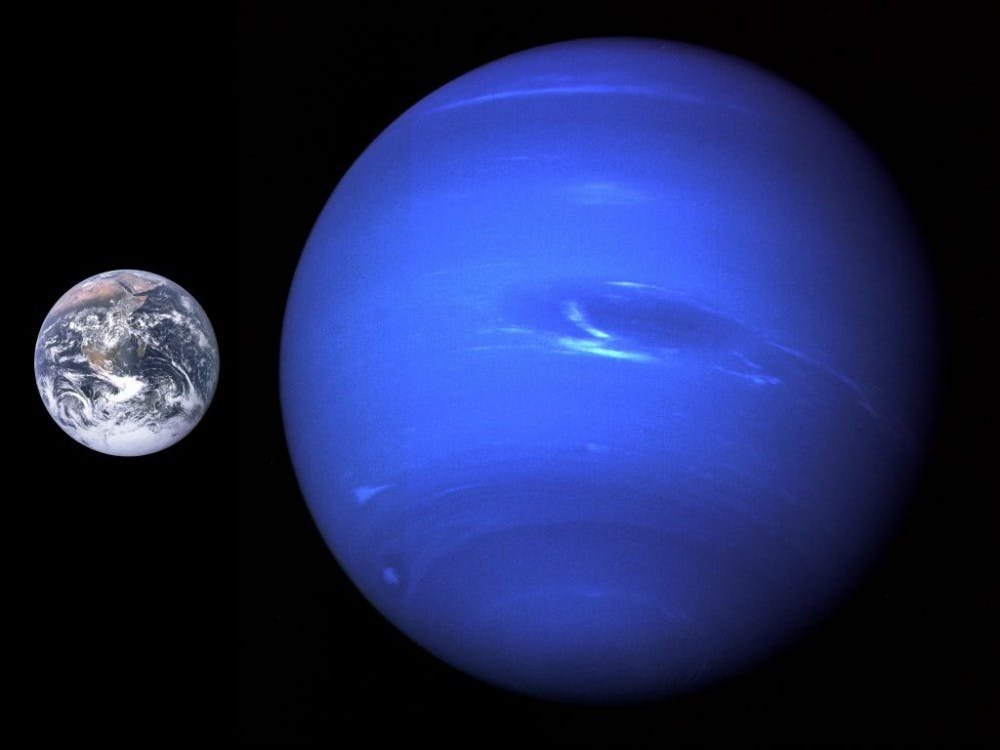Gas giants are massive planets that consist of a significant amount of hydrogen and helium gases, with only a comparatively tiny terrestrial core in the center. Jupiter, Saturn, Uranus and Neptune are the four unique gas giants that exist in our very own Solar System. Recently, a group of combined scientists from the Moscow Institute of Physics and Technology (MIPT) and the Skolkovo Institute of Science and Technology (Skoltech) in Russia successfully utilized computer modeling to detect inherently stable molecules that might be present in the interiors of Uranus and Neptune.
This discovery was made by a team led by Professor Artem R. Oganov and Gabriele Saleh, two researchers from the MIPT and pioneers in their respective fields of computational materials and chemistry.
“The smaller gas giants — Uranus and Neptune — consist largely of carbon, hydrogen and oxygen,” Oganov said in a press release.
These three elements are the foundational building blocks of not only compounds on Earth, but also compounds found on many other extraterrestrial planets. Under a very intricate combination of temperature and pressure, carbon, hydrogen and oxygen can form complex molecules such as carbonic acid and clathrate (a type of co-crystal made up of hydrogen and methane) which have just been found to roam near the core of the smaller gas giants.
On the other hand, these compounds simply cannot thrive in abundant amounts on Earth because Earth’s atmosphere renders them inherently unstable. Indeed it is significantly harder for these specific polymers to naturally form on Earth compared to Uranus and Neptune.
“The chemical composition of every planet’s atmosphere is very different. Uranus and Neptune have a much greater atmospheric pressure than Earth does, so it is reasonable for different atmospheres to catalyze different chemical reactions,” Mubdi Rahman, an Associate Research Scientist working in the Department of Physics and Astronomy, said.
Beyond the scopes of Neptune and Uranus, there are also icy satellites — such as Jupiter’s moon, Europa — that have sufficient conditions to form carbonic acid. An icy satellite is essentially covered by a thick layer of ice on the surface, and underneath the surface there is an ocean that surrounds a rocky core.
Rahman is currently a researcher at Hopkins with a specialized focus in star formations, and he pointed out the possibility that underwater life could still exist under the icy surface of Europa despite the extreme temperatures.
“The most impressing thing I find about gas giants is that they give us insight into what our Solar System looked like when it was in the early stages of formation,” Rahman said.
Because gas giants are so massive, they are able to trap most of the gases within their atmosphere. This almost serves as a time capsule that allows scientists and astronomers to examine the early conditions in planet formation that can no longer be found on Earth.
Researchers like Organov and Saleh had specifically chosen Neptune and Uranus as their target planets because these gas giants contain the three cornerstones of organic chemistry — hydrogen, carbon and oxygen. With more advances in computational imaging and technology, scientists might be able to confirm the existence of other previously obscured compounds hidden in the depths of Neptune and Uranus in the very near future.





